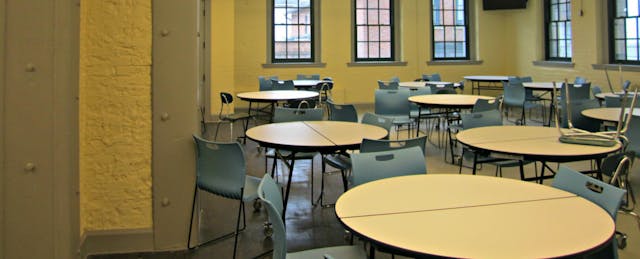Jacob Beal struggled in school, and after years of failing classes, his parents made the difficult decision to pull him out of his traditional public school and put him into an online charter for his eleventh-grade school year.
“It was a last resort, there were not many options, and he seemed to love technology,” said Beal’s mother, Jill Huennekens. But he struggled to remain engaged in the online program, and his scores sunk even lower. Toward the end of 2015, he dropped out.
Beal’s story is symbolic of a larger trend in underperforming online charter schools, according to a recent report published in the academic journal Educational Researcher by Dr. Andrew McEachin, a policy analyst at RAND, and Dr. June Ahn, an associate education professor at New York University.
Analyzing data from 1.7 million students in Ohio, the authors asked: Which students are opting into online schools? And how do they perform against peers who attend traditional public schools and brick-and-mortar charter schools?
Using a regression analysis, the researchers came to four major findings:
- Most students who chose both online and brick-and-mortar charters had lower academic achievement levels and came from lower socioeconomic backgrounds.
- Out of those students, white students were much more likely to enroll in online charter schools than minority students.
- Based on Ohio Achievement and Graduation Assessments, low-achieving students in online charters may be learning about one-fourth less than their peers with similar academic performance in brick-and-mortar schools.
- Regardless of an online student’s prior achievement levels, a majority of them perform worse than their peers with similar prior achievement in brick-and-mortar schools.
“There is a disconnect between the type of students who are going to the schools and the curriculums and services provided to them,” Dr. McEachin, the co-author of the study, tells EdSurge in an interview. He believes that the current way that some online programs design and deliver curricula do not meet the needs of low-income students who struggle academically.
The report comes at a time of uncertainty over the future of federal and state education policies under Education Secretary Betsy DeVos, an ardent advocate for charter schools and technology as alternative options for parents seeking more “school choice.” Already, politicians in Washington have proposed significant amendments to regulations to accountability rules that dictate how states report school performance.
“Politicians need to rethink and design accountability around online schools. It’s the same expectation of traditional public schools. If you’re going to have students with special needs, you need to have teachers who know how to work with that population.”
If Washington loosens regulations on online schools, the onus may fall on parents to hold these schools accountable.
The online students in the report “are not outliers,” says McEachin, adding that “in terms of other states’ achievement with e-schools, [Ohio students] are in the middle,” says Dr. McEachin. A study published in 2015 by Stanford University showed a consistent rate of low achievement from online students across 17 states. Also problematic were findings on deceptive attendance data collection practices. Audits completed in Ohio in 2016 found multiple online charters who inflated their attendance numbers, and some of those schools were ordered to pay back as much as 80 percent of the state funding they received.
Ahn and McEachin’s research notes that although online school enrollments only make up 2 percent of Ohio’s total student population, there has been a steady increase in the number of students opting for this type of education.
“I don’t mean to say that all online schools are broken, but in its current form it seems not to be working very well,” says McEachin.
McEachin suggests that politicians looking to scale online schools need to take these three steps:
- Figure out why certain populations are opting out of brick-and-mortar schools for online ones and use that information to improve traditional schools.
- Fund research for efficient models of online learning.
- Identify what states want out of online schools, determine the students they are serving, and make sure they have the resources and training to help those students succeed.
For parents, McEachin suggests that they inquire about class sizes in an online school before enrolling their students. Low-achieving students who might need additional support may not be well-served by an online teacher who has to work with a large number of pupils.
“They have to do something to engage these kids more. I tried to be that physical presence, and it just wasn’t enough,” says Huennekens. “When it came to test time, I would stand over his [Jacob’s] shoulder and try to guide him, but he completely lost motivation—it was heartbreaking.”
According to Huennekens, parents shouldn’t put struggling students into online courses without making sure they are independent enough to complete their assignments without a teacher standing over their shoulder.


